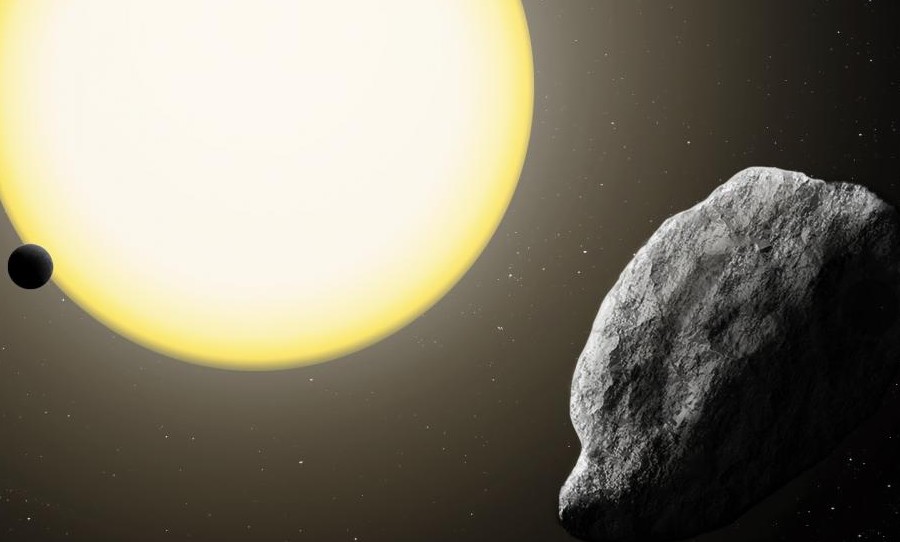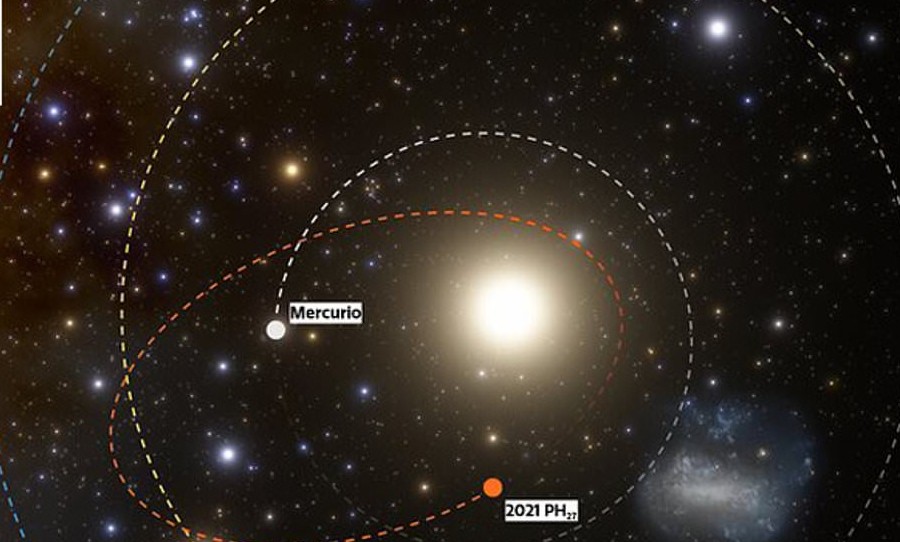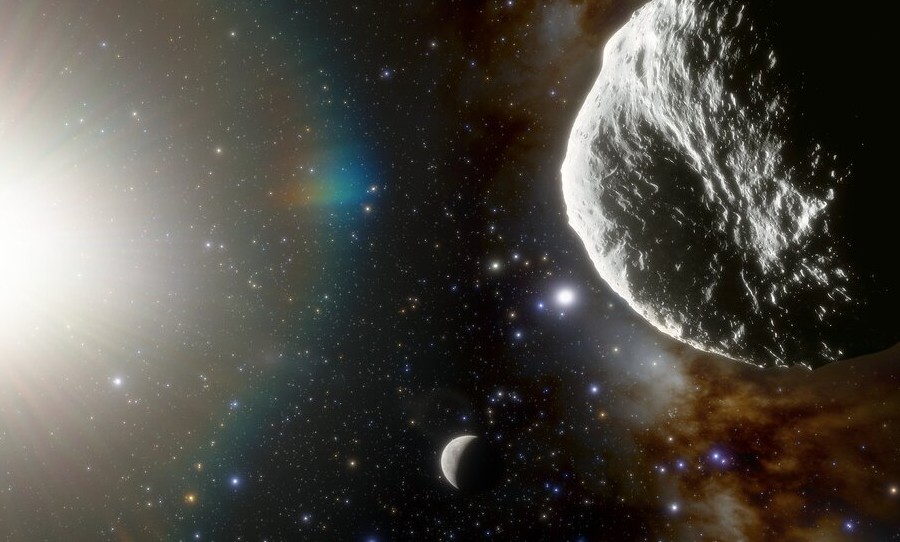Move aside, Mercury. The sun apparently has a new closest neighbour, asteroid 2021 PH27, astronomers discovered.
Using a new telescope in Chile, Astronomers have found the fastest-orbiting asteroid that gets closer to the Sun than Mercury.
Asteroid 2021 PH27 is about a kilometre in diameter and gets to 20 million kilometres of the Sun, reaching 500 degrees C. Apparently, that’s hot enough to melt lead.

2021 PH27’s origins remain a mystery.
Scott S. Sheppard of the Carnegie Institution of Science has theorised: “Most likely 2021 PH27 was dislodged from the Main Asteroid Belt between Jupiter and Mars and the gravity of the inner planets shaped its orbit into its current configuration,”
Meet 2021 PH27, which is about 1 kilometre in size and orbits the Sun in just 113 days, the second shortest known orbital period of any object in the Solar System after Mercury.
Meet 2021 PH27, which is about 1 kilometer in size and orbits the Sun in just 113 days, the second shortest known orbital period of any object in the Solar System after Mercury. https://t.co/iY2EGXcIbX pic.twitter.com/F5bUH2bqDa
— Carnegie Science (@carnegiescience) August 23, 2021
Scott S. Sheppard of the Carnegie Institution of Science found 2021 PH27 in images taken at twilight alongside Brown University’s Ian Dell’Antonio and Shenming Fu.
The discovery of 2021 PH27 is important as it will help astronomers figure out what asteroids could impact Earth.
“Understanding the population of asteroids interior to Earth’s orbit is important to complete the census of asteroids near Earth, including some of the most likely Earth impactors that may approach Earth during daylight and that cannot easily be discovered in most surveys that are observing at night, away from the Sun,” said Scott S. Sheppard of the Carnegie Institution of Science.

The future of 2021 PH27 is unclear. Astronomers can only suspect that it will likely be destroyed in a collision with either Mercury, Venus, or the Sun.
However, this won’t occur for millions of years.
A gif showing the discovery of the asteroid 2021 PH27, which Carnegie’s Scott S. Sheppard found in evening twilight images taken by Brown University’s Ian Dell’Antonio and Shenming Fu.
A gif showing the discovery of the asteroid 2021 PH27, which Carnegie’s Scott S. Sheppard found in evening twilight images taken by Brown University’s Ian Dell'Antonio and Shenming Fu. pic.twitter.com/aE4G6DpXHg
— Karthik Naren (கார்த்திகேயன்) (@nkknspace) August 23, 2021



